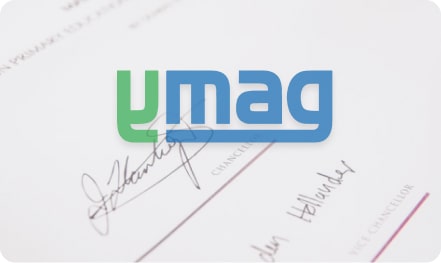Whenever you are setting up a new tool or upgrading a business process, it is essential to consider the ever-important return on investment (ROI).
Return on investment is the key factor to consider when making important investment decisions, so that you allocate the available resources more effectively.
As you think about the option of adopting an electronic signature system, you must consider the cost effectiveness of the e-signature tool.
What is the ROI for an online signature tool? How much can you save by switching from handwritten to electronic signatures? Let’s delve into it…
How is the ROI of an electronic signature tool calculated?
ROI (Return On Investment) is an indicator for comparing two values—usually costs and gains—and deriving a rate of return.
Expressed as a percentage, the ROI indicator provides a clear picture of the financial benefits associated with a process, tool, or investment. The higher the ROI, the more favorable the ratio of gains to costs.
There are two ways to evaluate the cost-effectiveness of an electronic signature tool: either compare the online signature process to the handwritten signature process, and thereby evaluate the real benefit delivered from the tool; or calculate the ROI of the electronic signature tool.
Electronic signatures VS handwritten signatures: the ROI match!
Let’s say you want to compare the two processes, to show your management the value of adopting an online signature tool. For this, we will rely on two values:
- The average annual cost of the handwritten signature process, taking all the variables into account. Namely: expenses for paper, printing (including the purchase of ink or toner cartridges, equipment maintenance, etc.), mail expenses (envelopes, postage, couriers, etc.), and filing (dedicated office space, purchase of filing cabinets, etc.).
- The average annual cost of the remote signing process: price of the software (purchase or subscription), hardware (computers, tablets, smartphones), maintenance, and additional costs.
The formula for calculating the ROI is as follows:
(average annual cost of handwritten signatures – average annual cost of electronic signatures) / average annual cost of electronic signatures x 100
For example, if process no. 1 costs you €20,000 per year and process no. 2 costs you €15,000 per year, this gives an ROI of 33% for process no. 2.
Remote signatures: a cost-effective investment?
Once your electronic signature tool has been adopted, you’d like to evaluate its overall cost effectiveness. The question is then the following: in view of the investment made, what are the gains generated by this tool?
To calculate the ROI, we use this formula:
(gain/loss – investment cost) / investment cost x 100
But while the formula is simple, the calculation is much less so. Because, while it is easy to know the cost of the investment (the amount paid to purchase the software or obtain the license, plus any regular expenses—maintenance, purchase of new features, etc.), it is much more complicated to evaluate the gains or losses.
Benefits of the electronic signature
If we want to estimate the gains generated by using a remote signature tool, we must take into account four variables:
- Savings compared to the handwritten signature process (paper, printing, mailing, archiving).
- Productivity gains for your teams. Streamlining the process and automating tasks tends to accelerate the life cycle of signed documents. The result is a net reduction in the number of hours spent by employees managing such documents—hours that have a cost for the company—but also a reorientation of working time, as staff can focus on tasks with higher added value. Not to mention the near elimination of the risk of error or loss.
- The benefits that come from increased sales, with regard to two phenomena: speed of execution (which boosts document processing and encourages prospective customers to engage) and improved customer experience (which conveys a better company image).
- The use that is made of the tool: how many documents are sent for signature each month, and how many people use the tool.
The ROI of a remote signature tool: Oodrive Sign as an example
The variables required to calculate the ROI depend very much on the company in question. However, the average gain based on the size of the organization can be estimated using a set of variables.
In the case of Oodrive Sign:
- A small business with 10 employees, each of whom sends out, on average, 15 documents for signature each month, will save €8,100 per year, in addition to a time saving equivalent to 0.6 FTE (full time equivalent). If we assume an investment of €9 per user per month, i.e. approximately €1,000 per year, to which we add €500 in sundry expenses, the ROI of Oodrive Sign amounts to 440% in financial terms alone!
- An SME with 50 employees, each of whom sends out, on average, 40 documents for signature each month will save €108,000 per year, in addition to a time saving equivalent to 7.7 FTEs. With a cost of €5,400 per year + approximately €2,600 in sundry expenses, the ROI of Oodrive Sign is 1250%!
The higher the volume of documents requiring a signature, and the higher the number of employees using the remote signing process, the greater the economies of scale yielded by the tool.
Whatever the size of the company, using Oodrive Sign is therefore economically cost effective—without even taking into account the positive effect on brand image.
By calculating your theoretical ROI in advance, you can present these figures to your management and show that adopting an electronic signature tool is simply a must!








